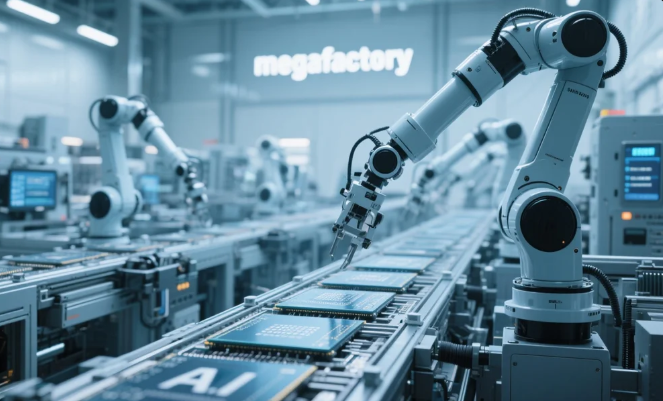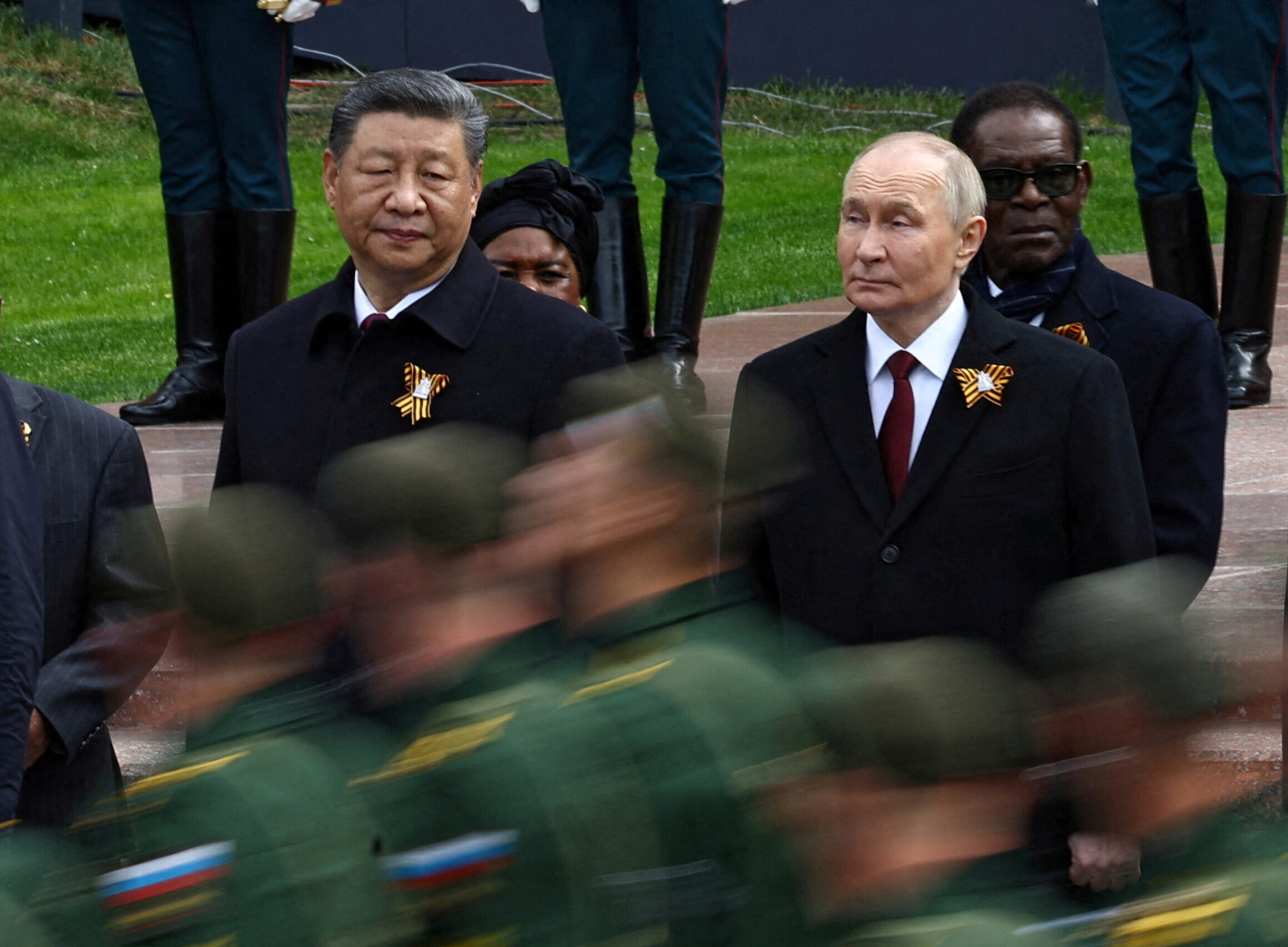Samsung Electronics Co. Ltd. said today it’s partnering with Nvidia Corp. to build an “AI Megafactory” that will accelerate its semiconductor manufacturing operations.
The company said it will deploy more than 50,000 of Nvidia’s most advanced graphics processing units in the new facility to embed artificial intelligence throughout its entire chip manufacturing flow. It’s also planning to leverage AI to help with chip development and design to facilitate a new generation of semiconductors, mobile devices and robotics with enhanced AI capabilities of their own.
Samsung isn’t talking about the “traditional” AI factories that Nvidia is building in partnership with the U.S. Department of Energy and Oracle Corp. Those previously announced facilities are essentially data centers that theCUBE Research defines as “a purpose-built system for AI production,” providing the immense computing infrastructure needed to train and run AI models. Rather, it’s building an AI-enabled semiconductor manufacturing plant that will embed automation into almost every stage of its chip manufacturing operations, including design, equipment, operations and quality control.
The company likens the planned factory to a “single intelligent network,” where AI will continuously monitor and analyze its production environments, make predictions, inform maintenance and optimize everything to try and boost its chipmaking yields.
Building the AI Megafactory
Samsung outlined a yearslong initiative that will see it integrate Nvidia’s accelerated computing capabilities throughout its proposed factory, with the main purpose being to scale its manufacturing operations. To do this, it’s going to rely heavily on AI-powered “digital twins,” or virtual replicas of its chip products. Using the Nvidia Omniverse platform, it’ll create digital twins of every component that goes into its semiconductors, including memory, logic, advanced packing and more. It’s also going to create twins of its actual fabrication plants and the expensive machinery within them.
The company explained that this will allow it to visualize its chip manufacturing operations in a virtual environment, where it will be able to check how they perform before it launches its physical production lines. It’ll be able to spot anomalies and work out where preventative maintenance will be needed, how to optimize production and more, then apply what it learns to its real-world factory.
What’s more, it’s not doing this only for chips. Although it plans to start with semiconductors, the company also wants to create digital twin environments of its hardware factories, where it manufactures devices such as its Galaxy smartphones and other products such as kitchen appliances and televisions.
One example of how AI can help with chipmaking is the “optical proximity correction” process, which is a critical step to ensure wafer pattern accuracy. In early tests, Samsung said its AI-enhanced OPC process helped to increase the speed and precision in which it can identify, predict and correct circuit pattern violations and abnormalities, resulting in a 20-times improvement in computational lithography performance. Nvidia’s cuLitho and CUDA-X libraries were critical in enabling this, the company revealed.
AI can also help to enhance electric design automation or EDA, which involves using specialized computer-aided software for designing new computer chips. The plan is to leverage Nvidia’s software and hardware to create a new generation of GPU-accelerated EDA tools.
AI won’t just help Samsung design and optimize its semiconductor manufacturing operations. It will also help automate the physical tasks of making its chips through the introduction of more intelligent factory robotics.
For instance, Samsung said it’s using Nvidia’s RTX Pro 600 Blackwell Server Edition platform alongside its Megatron framework to develop more advanced AI models to power its robots. These models demonstrate advanced reasoning capabilities that can be integrated directly into its factory machines and humanoid robots, allowing them to work with greater autonomy and precision, alongside humans.
Nvidia is also helping Samsung to link virtual simulations with real-world robot data, so its robots will be better able to perceive their physical surroundings and make faster, intelligent decisions in real world scenarios. It’s doing this with the Nvidia Jetson Thor robotic platform, creating models for robots focused on task execution and workplace safety awareness.
Like with its AI-enabled manufacturing optimizations, Samsung will also introduce its advanced robots into the rest of its manufacturing ecosystem in future.
AI networks and HBM4 memory chips on the way
Beyond the AI Megafactory, Samsung said it’s working with Nvidia and a number of South Korea’s top telecommunications companies to improve network communications. They’re collaborating on the development of a technology called AI-RAN, which integrates AI into mobile networks to support the deployment of AI agents and “physical AI” such as intelligent robots, drones and industrial equipment. Samsung has already demonstrated a proof of concept of AI-RAN, which it says will be critical for the future adoption of physical AI.
Meanwhile, Samsung said it continues to work with Nvidia on the development of its high-bandwidth memory chips, or HBM4, which are an essential component of AI servers. The company is making up for lost time here, as it has fallen behind its biggest competitor SK Hynix Inc. in the HBM memory chip sector, but believes it will ultimately be able to deliver superior performance when its HBM4 chips enter production next year.
.
According to Samsung, HBM4 chips is built on its sixth-generation 10-nanometer-class dynamic random-access memory and a four-nanometer logic base die, enabling processing speeds of up to 11 gigabits per second, exceeding the Joint Electron Device Engineering Council Solid State Technology Association’s standard of 8 gigabits per second.
Image: News/Dreamina AI
Support our mission to keep content open and free by engaging with theCUBE community. Join theCUBE’s Alumni Trust Network, where technology leaders connect, share intelligence and create opportunities.
- 15M+ viewers of theCUBE videos, powering conversations across AI, cloud, cybersecurity and more
- 11.4k+ theCUBE alumni — Connect with more than 11,400 tech and business leaders shaping the future through a unique trusted-based network.
About News Media
Founded by tech visionaries John Furrier and Dave Vellante, News Media has built a dynamic ecosystem of industry-leading digital media brands that reach 15+ million elite tech professionals. Our new proprietary theCUBE AI Video Cloud is breaking ground in audience interaction, leveraging theCUBEai.com neural network to help technology companies make data-driven decisions and stay at the forefront of industry conversations.










